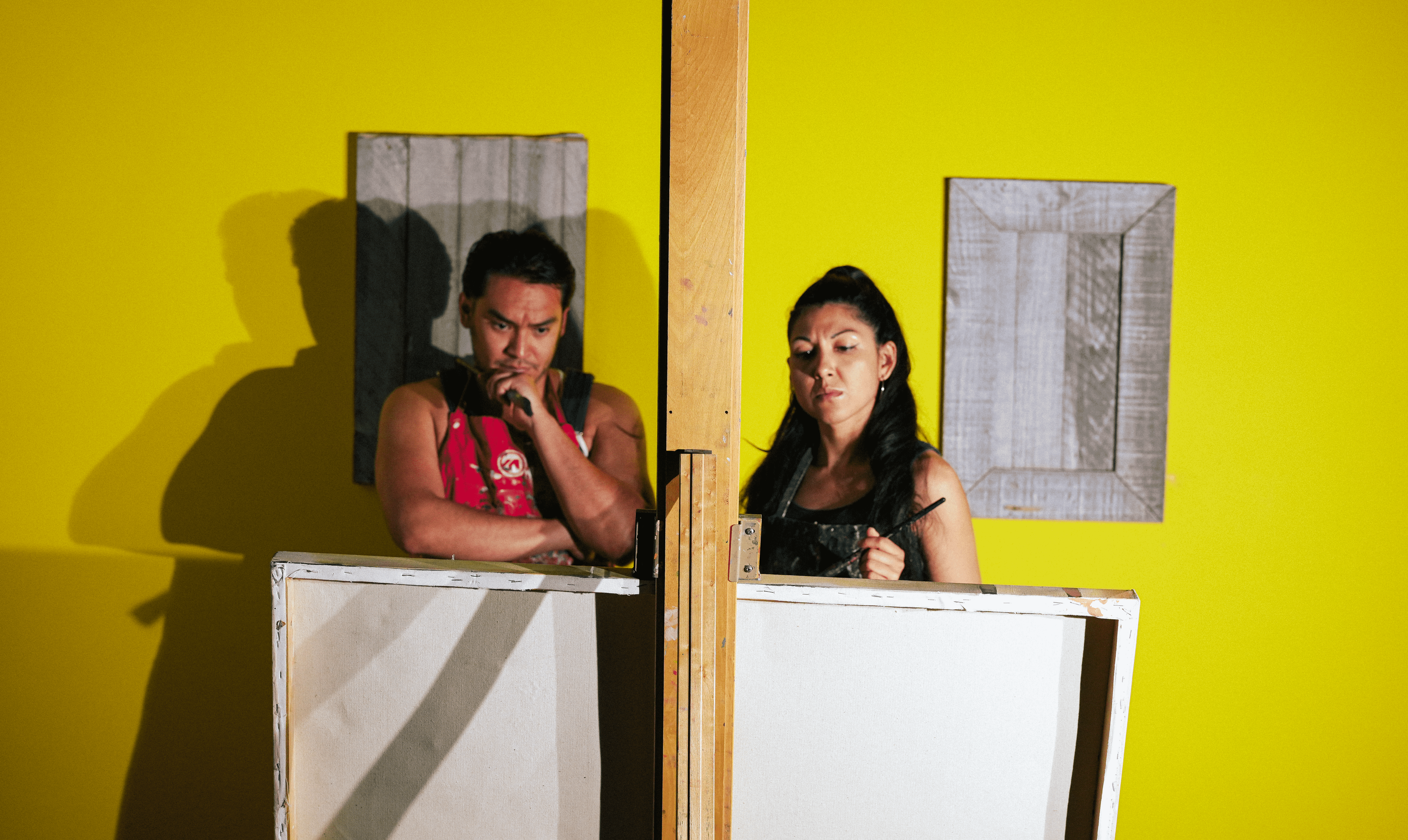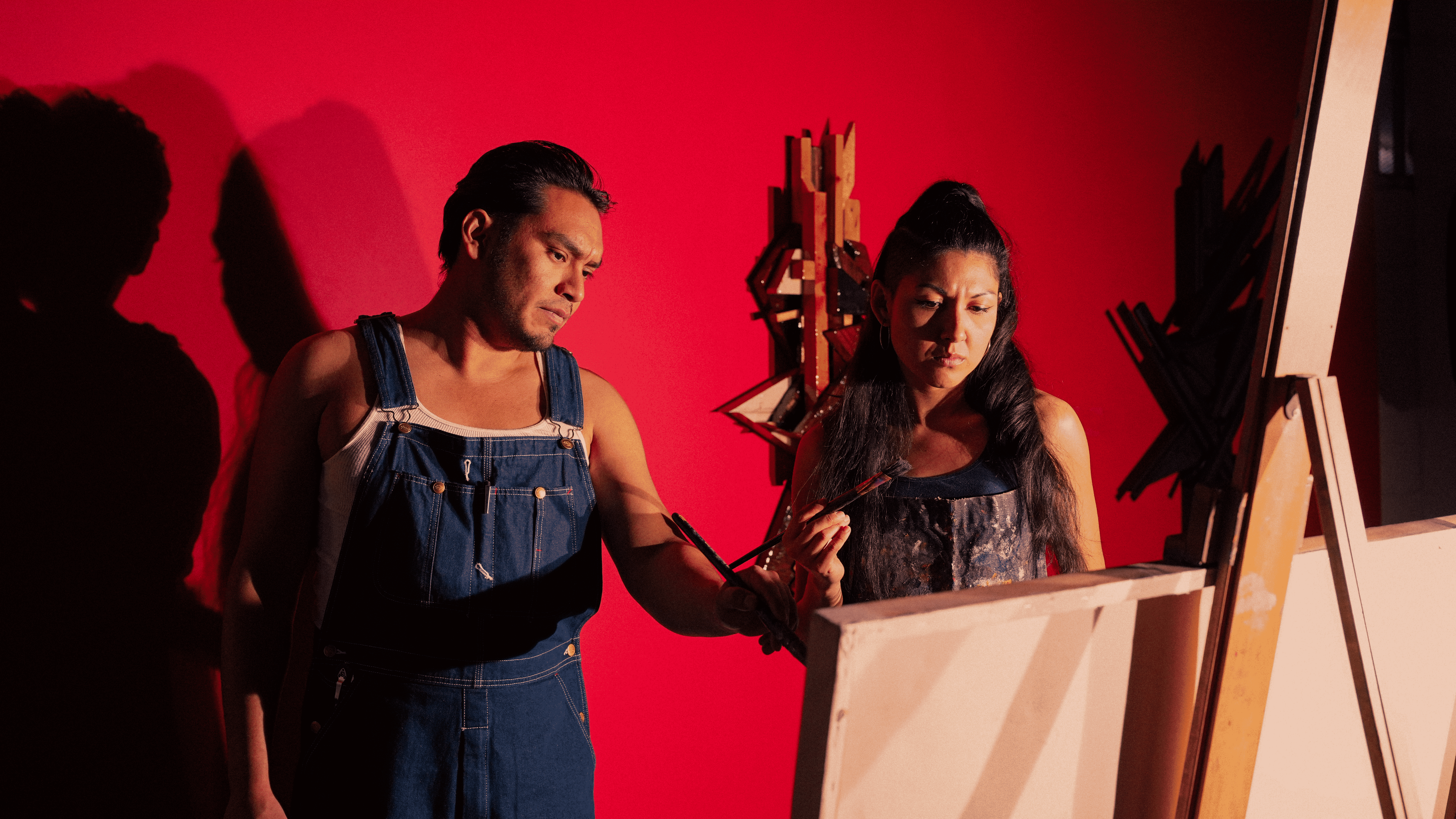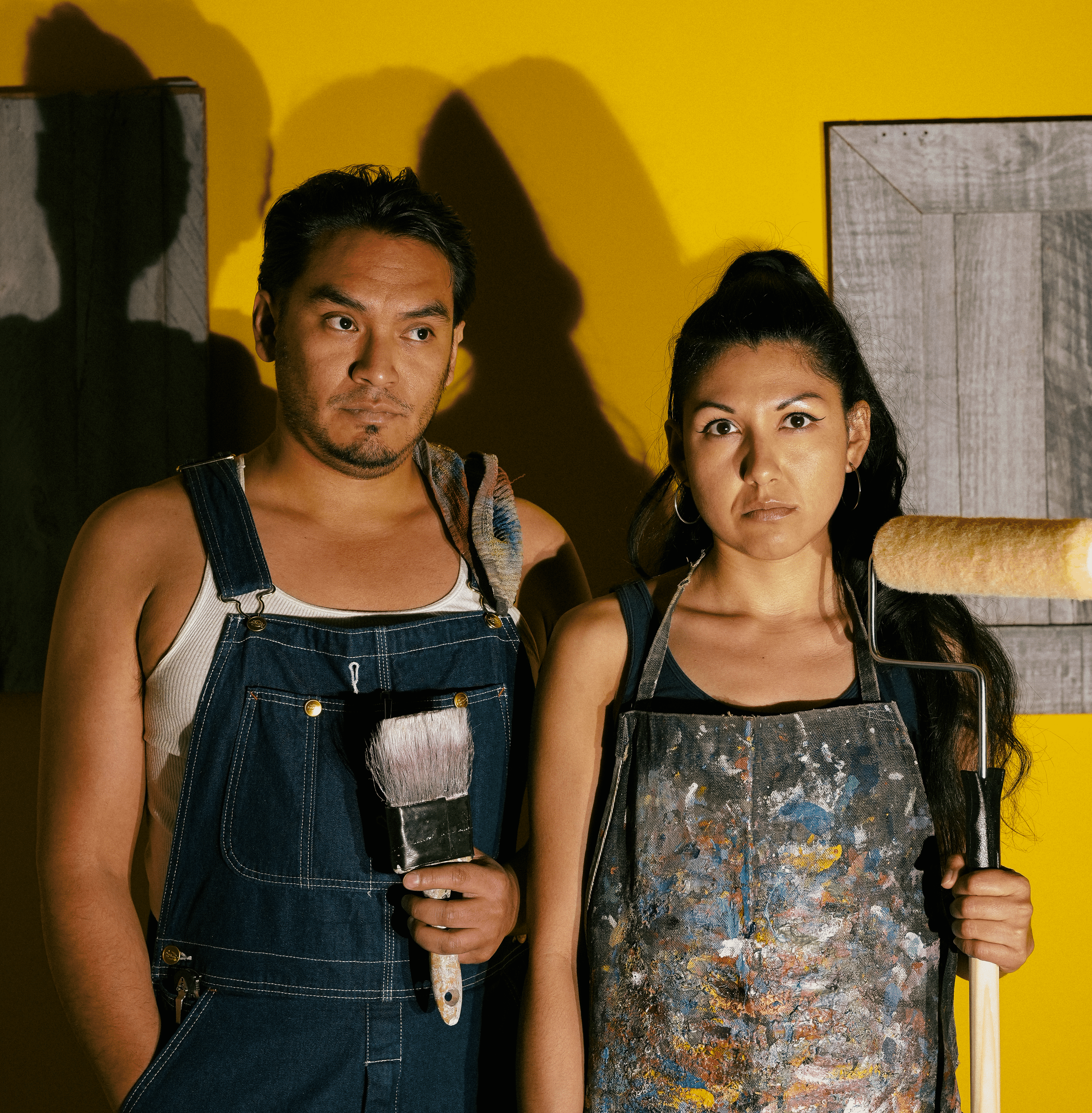
Courtesy of Elle Hong

Audio By Carbonatix
In the bustling art world, there lies an often unspoken but intense battle between personal fulfillment and the obligations we hold dear. Cheyanne, a new play written by multifaceted artist Cipriano Ortega, depicts this struggle in an intimate drama set in a cramped apartment, following the journey of an aspiring painter and her relationships.
“Cheyanne loves being an artist; I think it is a form of expression for her and a way for her to escape from all of the situations that she is currently dealing with,” says Iliana Lucero Barron, who plays the titular character. “She’s dealing with her father, Frank, who has dementia. She’s working on this piece with her partner, Rodrigo, which brings out the tension in their relationship. Even though she has a partner, she doesn’t need one. If this relationship fails, it won’t break her; conforming to the status quo of the art world would break her.”
Control Group Productions is presenting Cheyanne at the People’s Building for a limited, two-week run that opens Friday, April 26. The play’s origins can be traced back to a 2014 classroom assignment at Metropolitan State University of Denver, where it started as a ten-minute, one-act play. Initially conceptualized during a period of personal heartbreak, Ortega’s narrative centered on the struggles of a visual artist in New York in the 1990s.

In Cheyanne, each character navigates artistic aspiration and the realities of daily life.
Courtesy of Elle Hong
In the ensuing years, the script underwent several revisions and expansions to deepen its characters and themes, reflecting more contemporary issues. The play’s development was significantly shaped through collaborative workshops, including a reading with Flamboyán Theatre last September as part of the Emerging BIPOC Playwrights Project, before Control Group Productions agreed to produce a full-length production. This iterative process expanded the narrative to include new characters, such as Cheyanne’s father, as well as more complex themes such as dementia, societal pressures on artists of color and familial responsibilities.
“It’s been challenging not to get soapbox-y,” Ortega says. “I don’t have the solutions, but this is my way of voicing my frustrations. The underlying villain in the show is capitalistic oppression. As artists, we are very much suppressed within the confines of what is going to sell, but I think a good piece of art puts you in a situational crisis and leaves you unresolved; a lot of life is like that.”
He was inspired by Arthur Miller’s Death of a Salesman, which examines a man trying to find his identity while struggling with poverty; John Logan’s two-person play Red, about artist Mark Rothko; and Jack White of the White Stripes. The play depicts Cheyanne and Rodrigo’s personal struggles as they balance their artistic ambitions with the demands of caring for an aging parent. Ortega, who plays Rodrigo, describes his character as navigating the art world’s precarious dynamics, using his creativity to overcome personal and professional obstacles.

The play captures the intimate struggles of Cheyanne and Rodrigo.
Courtesy of Elle Hong
“My role is to try to manage or manipulate the situation to my advantage,” he admits. “It has been an interesting role to understand how cis men navigate the art world and use creativity to gain social status. He is also in love with Cheyanne, but I believe his and her definitions of love are quite different. Initially, it was difficult to feel compassion for this character. Many of the notes from the September reading indicated that his character was underdeveloped, so I reworked it to show he was simply another victim of the circumstances.”
In Cheyanne, each character navigates the tumultuous waters of artistic aspiration intertwined with the stark realities of daily life. Angelo (Angel) Mendez portrays Frank, whose declining mental health casts a long shadow over Cheyanne’s life and creative process.
“Frank is a stabilizing force in his daughter’s life,” Mendez says. “He’s dedicated his whole life to making sure that his daughter was raised right. He gave up his artistic passion to do that. There’s one point in the play where he has a moment of clarity, looks at her painting and sees that she’s poured her heart into it. That is his dream fulfilled: Even though he couldn’t do it, his daughter is doing it.”
Magally Luna adds another layer to the drama as Lisa, a character who represents the complex intersections of race, gender and commerce in the art world. “Her art is the fact that she navigates as a brown woman in a white world of predominantly men selling the art,” Luna says. “I believe she’s driven by the money, but also the prestige of living and working in a white man’s world and gaining money and respect from galleries.”
According to director Phil Luna, the technical aspects of Cheyanne are intentionally minimal. Luna and Ortega wanted to keep the play’s focus on the central human drama. “The design is abstract, with a lot of representational elements,” Ortega explains. “There will be a single canvas in the center of the stage surrounded by sections representing the kitchenette/studio, a makeshift bedroom and Frank’s bedroom. The canvas is the fifth character, and all four of them interact with it in very different ways.”
Cheyanne is a narrative that doesn’t shy away from the complexities of life or the imperfect resolutions that often accompany our most challenging moments. The play seeks to paint a realistic portrayal of individuals navigating the worlds of art, race and identity without resorting to clichés or stereotypes.
“I’d like everyone to come, especially people of color, because we actually get to be normal people,” Luna says. “We don’t have to represent in this play; we do, but we don’t have to be La Abuela or La Niña – we get to be real human beings that exist in the real world, and we don’t have to put on the mask that we’ve had to on stage. We just get to be us.”
Cheyanne runs Friday, April 26, through Sunday, May 6, at the People’s Building, 9995 East Colfax Avenue, Aurora. Get tickets at controlgroupproductions.org.